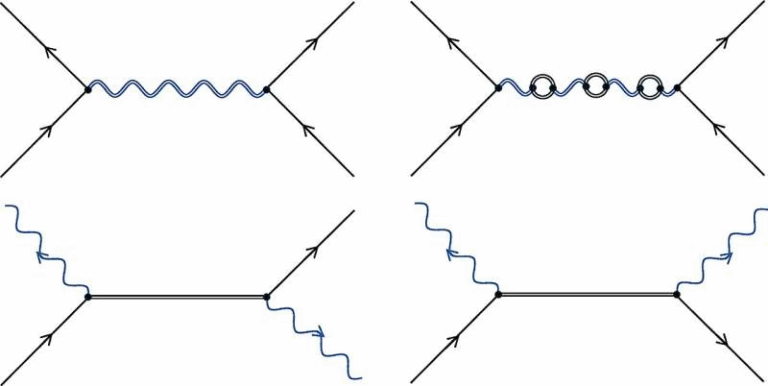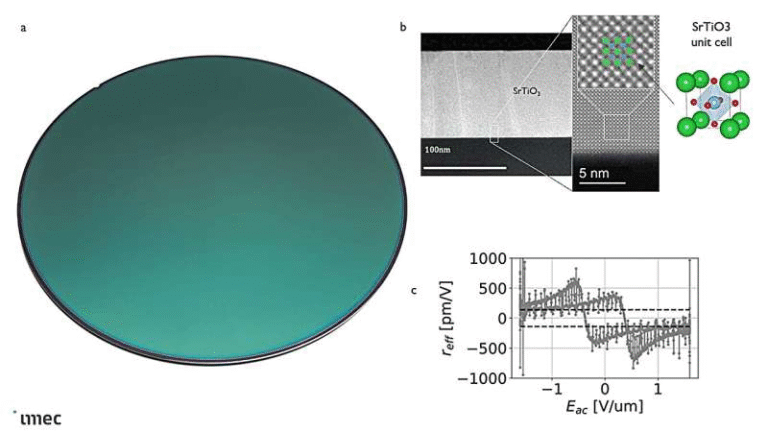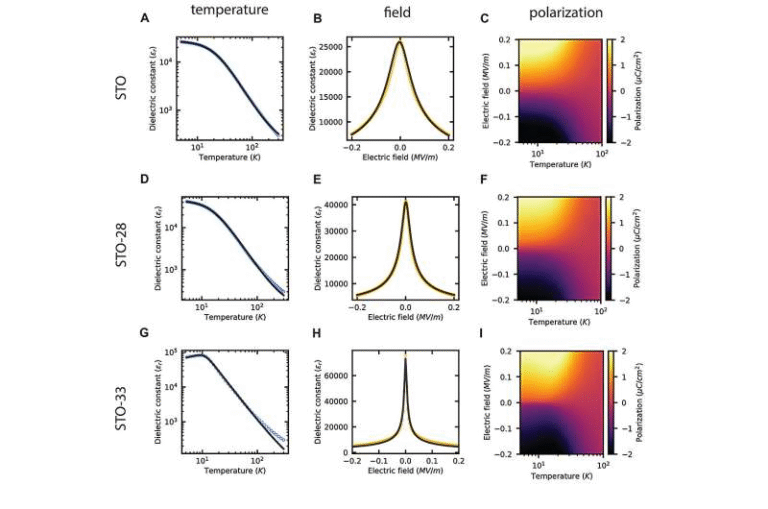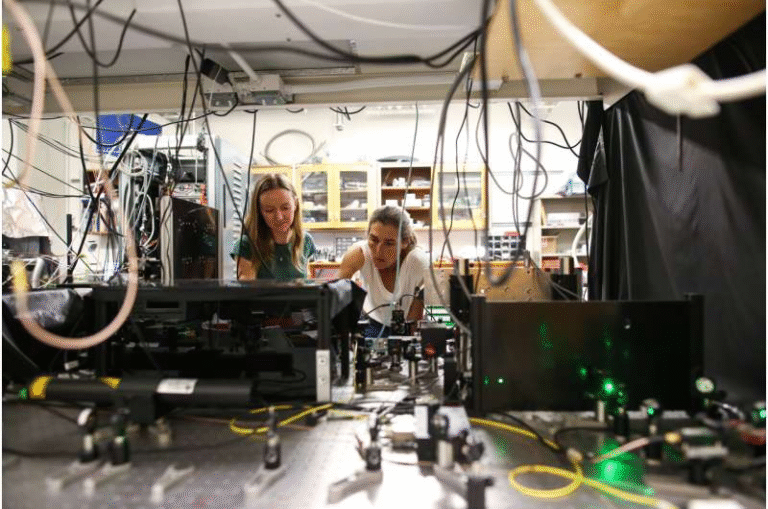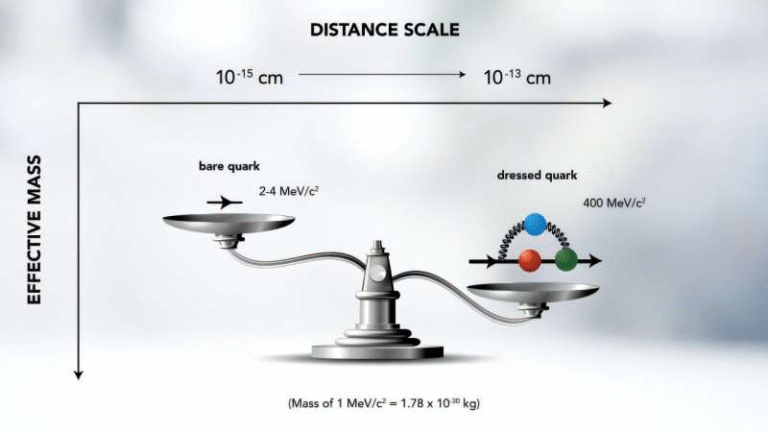A Tiny Chip That Lets Us See Deeper Into Space — And Into the Building Blocks of Matter

A group of researchers from Tsinghua University in China has developed a tiny imaging chip that could completely change the way we observe the universe and study the composition of materials. The new device, called RAFAEL (short for Reconfigurable, Adaptive, Fast and Efficient Lithium-niobate spectro-imager), is a spectroscopic imaging system that can capture light with unprecedented detail and speed.
The study describing RAFAEL was recently published in Nature (October 2025), and it’s already drawing attention from astronomers, physicists, and materials scientists around the world. This chip, which is smaller than a fingernail, has managed to do what bulky, high-end laboratory spectrometers have struggled with for decades — it sees more, faster, and with higher accuracy, all while fitting onto a single micro-scale platform.
What Exactly Is RAFAEL?
RAFAEL is a miniaturized spectrometer — a device that analyzes light to understand the physical and chemical composition of objects. Spectroscopy is used everywhere: in space exploration, medicine, environmental science, food safety, and pharmaceutical testing. Whenever light is analyzed to find out what something is made of, spectroscopy is at work.
The challenge with traditional spectrometers has always been a frustrating trade-off: if you want high resolution, you lose light sensitivity, and if you let in more light to improve brightness, you sacrifice detail. RAFAEL solves this problem by combining advanced photonics with smart computation on a chip made from lithium niobate, a crystal famous for its unique optical properties.
The researchers layered a thin film of lithium niobate on top of a standard CMOS camera chip — the same kind of sensor used in digital cameras — to create a reconfigurable optical system. By applying tiny voltages, the behavior of each pixel changes instantly. Every pixel on the chip becomes capable of tuning itself to capture different wavelengths of light. When light from a star, a chemical sample, or any other source hits the sensor, the chip captures a coded image that powerful algorithms can decode in real time into a crystal-clear spectral map.
The result is a snapshot hyperspectral image — a kind of light fingerprint that shows the exact wavelengths and intensities of light coming from a source. This allows scientists to study everything from the composition of distant galaxies to minute traces of chemicals in a water sample.
The Science Behind the Chip
Lithium niobate (chemical formula LiNbO₃) is the secret ingredient here. It’s a synthetic crystal that has exceptional electro-optic properties — meaning it can change how it bends light when an electric field is applied. This makes it ideal for building optical circuits that can dynamically modulate light at extremely high speeds.
In RAFAEL, this property is used in an ingenious way. The lithium-niobate layer acts as a spatially varying interference filter — each pixel on the chip slightly modifies the light it receives based on the applied voltage. This modulation happens at a scale smaller than the wavelength of visible light — that’s less than a millionth of a millimeter.
By controlling the voltage pattern across the chip, the researchers can “program” which wavelengths each pixel is sensitive to. This means the chip doesn’t just capture a simple image like a normal camera — it records a full spectrum at every point in the image.
After capture, special decoding algorithms reconstruct the data into a high-resolution spectral image, effectively mapping both the spatial and spectral characteristics of the scene.
This type of imaging — called snapshot hyperspectral imaging — is extremely powerful because it captures the entire data cube (space + wavelength) in a single exposure. Unlike older scanning spectrometers, there’s no need to mechanically move lenses, mirrors, or gratings, which often makes instruments large and slow.
Stunning Performance in Early Tests
The RAFAEL prototype has achieved results that outperform even the most advanced current systems.
- Spectral resolution: about 0.5 Ångström (0.05 nanometers) across visible to near-infrared light (400–1000 nm).
- Optical transmittance: roughly 73.2%, meaning it captures more than 70% of incoming light — twice the efficiency of leading snapshot spectrometers.
- Frame rate: about 88 frames per second, making it fast enough for real-time applications.
- Spatial resolution: 2048 × 2048 pixels — equal to a 4-megapixel image sensor.
In one demonstration, the research team integrated RAFAEL with a commercial telescope lens and pointed it toward a patch of the night sky. In a single, short exposure, the chip captured high-resolution spectra from 5,600 stars simultaneously. To put that into perspective, traditional methods would take hours or days of scanning to collect equivalent data.
This performance level means RAFAEL could map the universe thousands of times faster than existing instruments while maintaining higher sensitivity and clarity.
Why This Is a Big Deal for Astronomy
Astronomers rely on spectroscopy to learn what stars and galaxies are made of, how fast they’re moving, and how they formed. Every element emits and absorbs light in a unique way — a spectral signature. When a telescope equipped with RAFAEL looks at a distant object, it can capture thousands of these signatures in one shot, revealing the chemical makeup of entire star fields at once.
Currently, high-resolution spectrographs are huge and complex — some take up entire rooms and require delicate calibration. RAFAEL condenses all that into a tiny, chip-scale system, reducing weight, size, and power consumption.
This could be revolutionary for space telescopes and satellites, where every gram matters. A RAFAEL-type chip could one day be installed on small satellites or deep-space probes, enabling them to gather detailed spectral data that once required massive instruments on Earth.
Beyond Space: Everyday Uses for a Cosmic Technology
While RAFAEL’s debut experiment was aimed at the stars, its applications go far beyond astronomy. The same technology could dramatically improve spectroscopy in everyday fields such as:
- Medicine: Identifying diseases by analyzing the chemical signatures of tissues or cells.
- Food safety: Detecting contaminants, adulteration, or spoilage in food products within seconds.
- Pharmaceuticals: Checking drug composition and purity with portable, chip-based analyzers.
- Environmental monitoring: Detecting pollutants in air and water at microscopic concentrations.
- Manufacturing and materials science: Examining the chemical uniformity of materials during production.
Because RAFAEL is small, lightweight, and fast, it could easily be integrated into handheld devices, drones, or autonomous lab systems. Imagine a world where a smartphone-sized device could instantly analyze what an object is made of, simply by capturing its light.
Technical Challenges and Next Steps
Despite its promise, RAFAEL is still in the laboratory prototype stage. The researchers admit that several hurdles remain before it can be deployed in real-world instruments.
First, computational efficiency is a major challenge. The decoding algorithms that reconstruct the hyperspectral data from the raw pixel patterns require massive processing power. For practical applications — especially in space, where computing resources are limited — new low-power, real-time processors will be necessary.
Second, cost and manufacturing need improvement. Although lithium niobate is a well-studied material, fabricating uniform, high-quality LN layers and precisely aligning them over imaging sensors is still expensive. Scaling up production to make millions of RAFAEL chips would require new fabrication techniques.
Third, environmental durability matters — especially for telescopes or space missions. The chip must withstand temperature fluctuations, radiation, and mechanical stress without losing calibration or spectral precision.
Nevertheless, the Tsinghua team is optimistic. They believe improvements in computational optics and photonic integration could soon make RAFAEL commercially viable.
Why Lithium Niobate Is a Superstar Material
To understand why RAFAEL works so well, it’s worth taking a moment to look at lithium niobate itself. This material has been a favorite in photonics research for decades. It’s used in optical modulators, nonlinear frequency converters, and waveguides because of its extraordinary ability to change how it interacts with light under an electric field.
In recent years, advances in nanofabrication have allowed scientists to create thin-film lithium niobate (TFLN), which maintains these properties but can be integrated directly onto chips. This has led to the rise of integrated photonics — the optical equivalent of microelectronics.
RAFAEL is one of the most striking examples of this trend. By merging lithium niobate photonics with CMOS imaging, it shows how optical systems that once filled entire labs can now fit on a chip smaller than a coin.
The Data and Algorithms Behind the Scenes
Capturing light is only half the story — interpreting it is the other. RAFAEL uses advanced computational imaging algorithms to translate the encoded pixel data into usable spectra.
Each pixel in RAFAEL receives a mix of wavelengths, modulated differently. The decoding process involves complex mathematical inversion and machine learning techniques to recover the full spectral cube from the encoded snapshot.
The researchers used specialized architectures such as MAE-decoder, PSAM, and SPECAT, which are based on transformer-style deep learning models. These algorithms separate the spatial and spectral information embedded in the data and reconstruct the full hyperspectral image in milliseconds.
This combination of hardware and software co-design — tunable optics plus computational decoding — is the core innovation of RAFAEL. It’s what allows it to achieve such extreme resolution and efficiency in real time.
Broader Impact and Future Outlook
If RAFAEL continues to develop successfully, it could usher in a new generation of miniaturized spectroscopic imagers.
- Astronomers could use compact instruments to perform massive sky surveys from orbit or ground-based observatories.
- Scientists could carry powerful analytical tools in the field, analyzing materials instantly without bulky lab equipment.
- Space missions could deploy swarms of small satellites, each equipped with a RAFAEL chip, mapping the cosmos in record time.
The researchers point out that while the device already achieves sub-ångström precision, future versions might extend into the ultraviolet and infrared ranges, opening new possibilities in astrophysics and remote sensing.
They also note that improving on-chip data processing — possibly through dedicated AI accelerators or optical computing elements — could make the system even faster and more efficient.
RAFAEL represents more than just a new tool for science; it’s part of a broader movement toward integrated photonics, where optical devices shrink and merge with electronics. Just as microchips transformed computing in the 20th century, photonic chips like RAFAEL may transform how we observe and understand the world in the 21st.
Research Reference
Paper: Integrated lithium niobate photonics for sub-ångström snapshot spectroscopy
Authors: Zhiyang Yao, Shuyang Liu, Yingce Wang, Xiaoyun Yuan, Lu Fang, et al.
Journal: Nature, October 2025
DOI: 10.1038/s41586-025-09591-x
